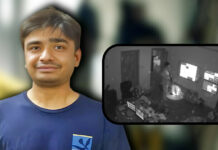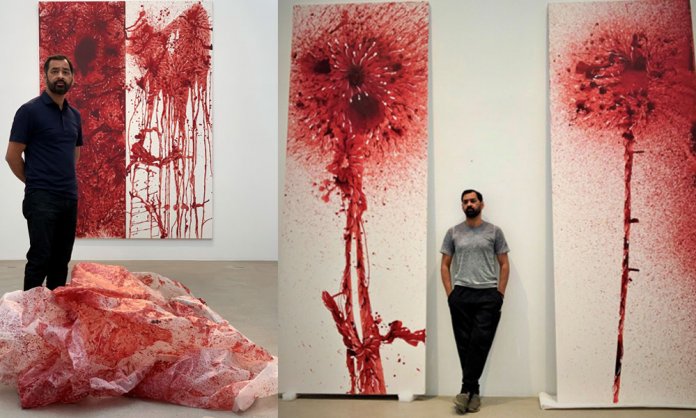Galerie Thaddaeus Ropac presents ‘The Seeming Endless Path of Memory’; an exhibition of international award-winning artist Imran Qureshi’s new work, in Paris, France.
Imran Qureshi’s practice is rooted in the tradition of 16th-century Mughal miniature art, encompassing figurative and abstract works on paper, painting and site-specific installation. Indeed, the exhibition title, The Seeming Endless Path of Memory, along with the titles of the works on display, echo the words of Pakistani poet Faiz Ahmed Faiz (1911-1984) which are prevailing throughout Qureshi’s work. They reveal various social and cultural connotations, and subtly reflect the threat of violence as a continuous motif.
Resonating throughout the exhibition is the artist’s exploration of the infinite through the figure of the fold: the screen-like structure of his panel painting with dark layers of red or blue gradually transforming into light gold, the subtle changes of tonality appearing as one continuous course of action.
Elsewhere, Qureshi is drawing upon the tradition of action painting by welcoming gravity and improvisation into the artistic process: through direct physical engagement with the canvas, the act of painting becomes a performative part of the painting’s expression. Throughout Qureshi’s practice, the artist reflects on the symbolic meaning of numbers.
The exhibition is further featuring a prominent series of miniature paintings depicting the Story of Two through finely painted trees that show a subtle unity and separation, akin to arteries of life juxtaposed against the self-portraits taking the position of the sole observer.
In various works throughout this exhibition, the artist is illustrating the historical idea of ‘heaven’ in opposition to violence and nature, an idea that proves crucial in the understanding of Imran Qureshi’s artistic universe.
Imran Qureshi’s works are modulated through a socio-political reflection on the precariousness and inherent violence of the contemporary world. Ultimately, whether presented in large-scale or in miniature formats, his works tend towards an aesthetic, religious and spiritual inquiry on the proximity of creation and destruction and recreation in all aspects of life – engaging the viewer on both a visceral and spiritual level.











































